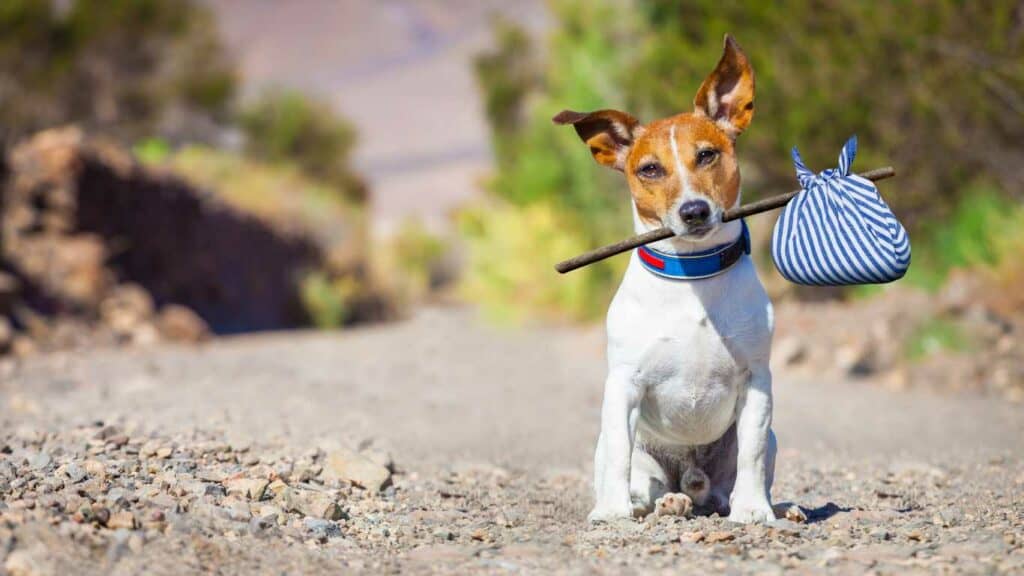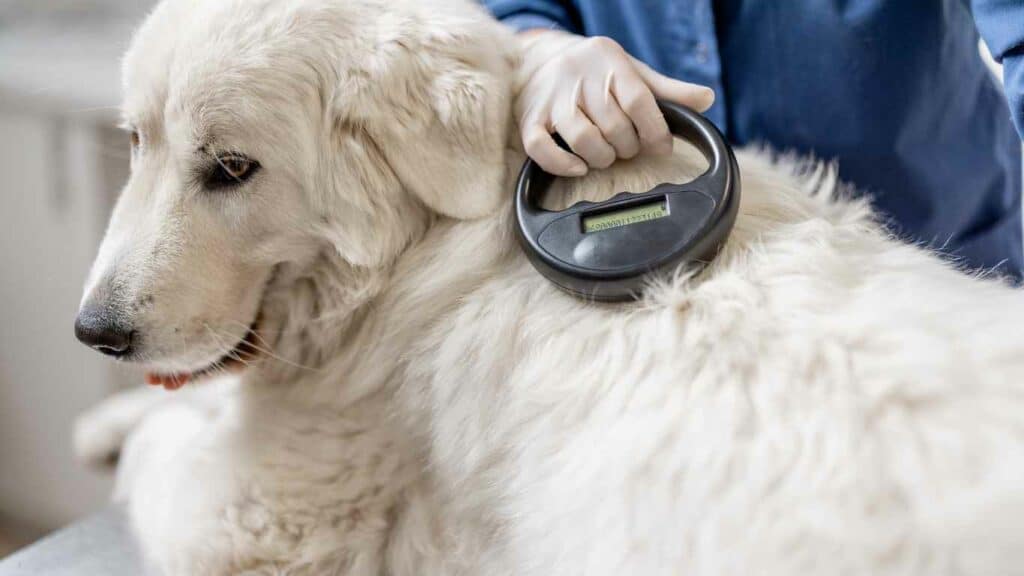Losing your pet is every owner’s worst nightmare. Maybe you accidentally left your gate open or neighborhood fireworks caused your dog to bolt out the door at first chance. Regardless of why or how, it can happen to you. But with a little planning and prevention, you won’t have to worry losing your pet. And if you do, there is a lot more to it than you think.
Pet Recovery Specialists, also known as Pet Detectives, are experts in the field of finding lost animals. Usually they have a background in tracking, marketing, and dog behavior. Some specialists are online services that assist with marketing and gaining awareness while others are consultants with backgrounds in tracking. We have spoke to a few of these pet professionals and here are their recommendations on Prevention, Recovery and Common Myths.
Prevention
Losing your pet is a stressful and devastating experience. Sarah Sypniewski, a professional missing pet recovery expert, shares her tips on how to be prepared ahead of time should you ever find yourself in a situation where you need her help.

Let go of the “it will never happen to me” mentality
Most cases start with “Fluffy’s NEVER done this.” Animals are unpredictable and surprising. So the first step is believing that it can happen to you and then taking the necessary steps to prevent it.
Keep your pets secure during parties or new environments
One of Sarah’s client’s dog, Piper, was on location with her owner in a studio. It was a new environment, and Piper just slipped out of the back entrance without anyone noticing. When bringing a dog to a new place or a party, make sure they are secure in a crate, behind a baby gate or closed door. If you are attending a party, consider keeping them on leash or at home. Also, keep reminding your guests to close doors behind them. It only takes one second for a pet to dart out of an open door.
Related Article: Calm Your Dog During Loud Events
Do not keep them alone in the back yard
Assume whatever can go wrong, will go wrong. In this scenario, escape, theft, or being eaten are the top three likelihoods of what could happen to your dog if left in the backyard alone. Dogs can push through unsecured barriers or dig under fences, and if spooked, bolt. Depending on what kind of dog you have, someone might steal them. If you live in the Los Angeles area, a coyote or even a mountain lion could snatch them–all in mere minutes. Always stay with your dog when outside.

Make sure pet ID tags are current and secure
Tags are the quickest and cheapest way to ensure your dog is returned to you. If you have a small, cute dog with no tags, someone might claim your pooch as their own. For large dogs, they could sit in the shelter for weeks and could end up euthanized. With proper tags, finding your lost dog is quick and easy. People will contact you immediately. Check them regularly for correct fit and replace them when needed.
Keep your microchip information up to date
Do you even know who your microchip company is? Ask your vet to check for you and then log online and update your information. Keep your microchip company’s information including your dog’s chip number in a place that’s readily available should you need it quickly.
Use a professional, experienced pet care provider
Find a reputable, experienced provider to care for your pet. Many lost pet cases start when the pet gets loose from a pet sitter–even a professional one–because pets can become anxious while you’re away – even in the best of hands. If you have an anxious dog and have to leave them while you’re away, outfit them with a pet tracker just in case they get spooked and bolt. Also be honest and upfront with the pet professional so they know they are handling an anxious dog.

Regularly check fencing and yard
Every 3-4 months, get in the habit of checking your fence, privacy vegetation, and other barriers. Look for loose or decaying boards, warped chain links, walls that are losing height, or holes in shrubbery. Also inspect the ground below the fence—is there potential for your pet to dig under? Fix and fill in your yard promptly. If you keep your pet on a tethered leash in the yard (hopefully attended and NOT for extended periods of time), check to make sure it is secure and not frayed or breaking apart.
Train your pet on a recall command that is 100% effective
This usually only works for dogs but you can definitely try with your cat too. Putting the time in to teach your dog “HERE!” or another command that they respond to immediately and without fail is a life saving skill. It can stop them mid run and out of danger. Recall Training Class
![]()

Recovering your lost pet
Losing your beloved pet is not only heartbreaking but extremely stressful. To make sure you are reunited with your best friend, there are necessary steps you need to take to help increase the chance of a reunion.
Plaster your neighborhood & community with posters
As old school as it may seem, this search tactic is still just as useful today. Posting posters in high traffic areas and handing out flyers to local businesses and anyone walking by can bring immediate awareness.
Posters should large, bright and simple to catch people’s attention. Start with a 8.5×11 photo and adhere it to bigger neon poster board with written phone number and the word “Missing” in both English & Spanish (if in LA). If there are other lost pets in the area, make sure to use different colors to differentiate your pet.
It also helps to include where your pet was last seen, that they are loved, and any unique features they may have (ex. brown spots on back, white sock print on left paw, etc.).
Create awareness online
It is highly recommended to use online pet recovery specialists or neighborhood platforms to gain immediate local awareness. These platforms offer social media posting, text and email alerts as well as other offerings. The most popular and successful pet recovery companies and neighborhood platforms include Nextdoor, Pawboost, Ring, PetKey, LostMyDoggie, Craigslist and Petcolove. The Citizen App is the most highly recommended because it allows you to post lost and found pets for free and they have the ability to send out over 130,000 notifications.
Next post info about your lost pet on your personal social media accounts along with FB groups and pages and ask your friends to share. There is a high possibility your city or town has a lost & found pets page on Facebook, so send them a message with a photo of your pet and as much information as possible and they can share it on their page.
Check Craigslist for dogs for sale
Unfortunately there are people out there who always try to make a profit out of other people’s misfortunes. So many times dogs are found by the wrong person and sold online. Check your local craigslist along with locations outside your area to see if someone is trying to sell your pet.

Use your scent
Dogs have amazing noses, use that to your advantage. Put out some unlaundered clothing that carries your scent around your home. If your dog is scared or disoriented, the familiar scent of your clothing may help guide them home.
Contact shelters and veterinarians
Many of the pet recovery companies will send auto messages to veterinarians and shelters, but it’s always good to do it yourself as well. Your local shelter is the first place you should go and get acquainted with how their system works. Also ask about “deceased dog pick up” and check it daily.
Next, visit your local vet offices and drop off flyers with your contact information. If your pet has a microchip number, provide them with that information. If your pet is not chipped, offer a detailed description including special marks.
Alert your microchip company
If your pet is microchipped, call the company that made the check as soon as possible. Let them know your pet is missing and they can keep an alert out if the chip was scanned by anyone.
Don’t give up!
Above all else, this may be the most important step! It can be so disheartening and exhausting searching for your lost pet. The more optimistic you are, the more energy you will have to keep searching for your best friend. Believe!

Common myths about lost pets
You found a lost pet, now what? A lot of people who may pick up a stray dog on the street or find a lost dog wandering their neighborhood don’t know the correct steps to take in ensuring that the dog is reunited with their owner.
To find answers and ensure that these four-legged friends reunite with their owners safely, we spoke with Linda Coldiron – an award winning bloodhound handler, as well as local shelters who shed light on some of the biggest misconceptions about dealing with lost dogs.
Shelters are not safe
For most people who find a lost dog, they are afraid to bring them to the shelter in fear that the dog may be killed if no one claims them. However, shelters should always be the first places you go if you find a stray. Shelters can scan microchips and alert owners. Plus, a lot of owners visit their local shelters daily in hopes of finding their lost dog.

Microchips are GPS
Lets make this clear, microchips are not GPS. Think of them more like an embedded QR code. Each microchip contains a registration number and the phone number of the registry for the particular brand of chip. A handheld scanner reads the radio frequency of the chip and displays this information to the vet or shelter that scans the chips. Thus, they are able to contact the owner.
People who lose their dogs are bad owners
This is simply not true! Dogs are so unpredictable and the slightest mistake can lead to your dog getting out or running away. Even the most trained dogs have a chance of escaping. Don’t assume people who lose their dogs are bad owners. While some people may abandoned their dog by letting them loose, these people are the minority, not the majority of owners. Assume the dog has a loving home and a family is desperately trying to find them.
Learn more about Linda Coldiron’s work with her company, Lost Pet Detection, below:
This article was originally published in 2014. Last updated on 2/14/23.